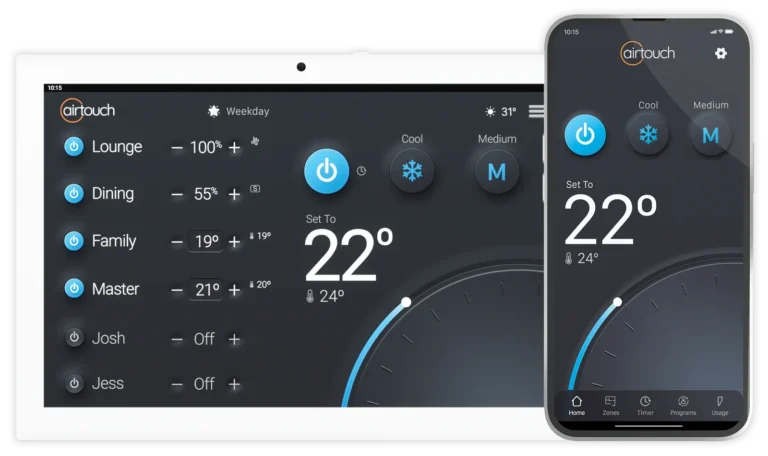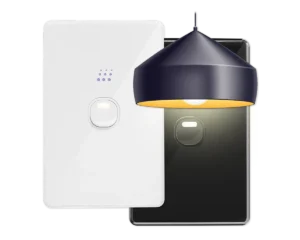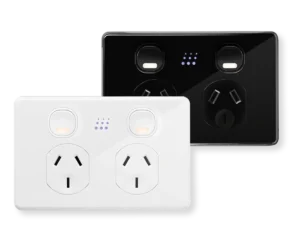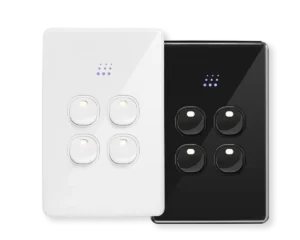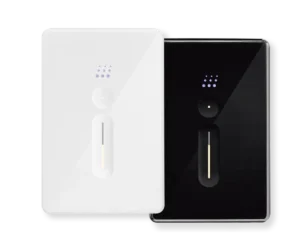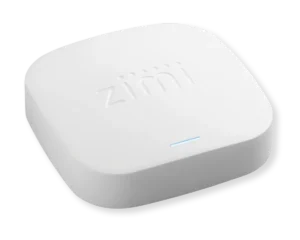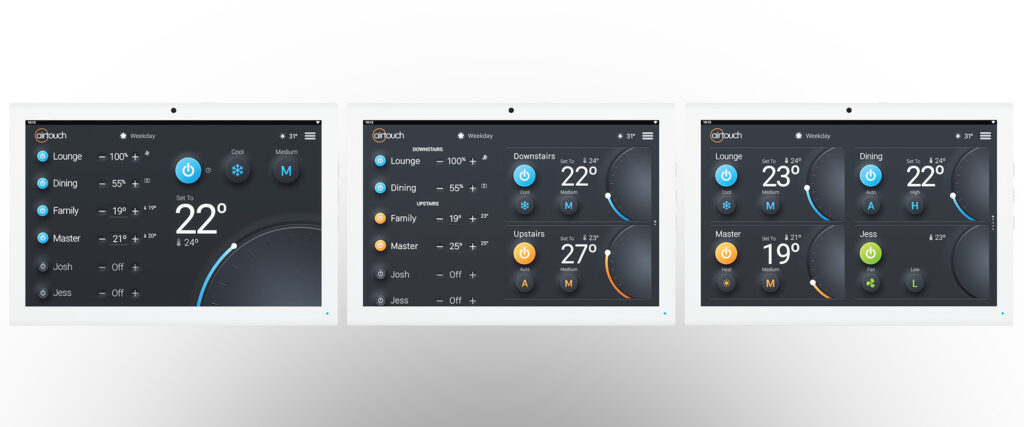Air conditioning has become more than just a luxury in today’s world, it’s a necessity for comfort in many climates. However, as technology advances, homeowners and business owners alike have a wide variety of options when choosing an air conditioning system. Let’s dive into the nitty-gritty of both ducted and VRF systems and understand how the AirTouch 5 can fit perfectly into the equation and help you get more from either type of system.
When considering controllers, it is great to know that no matter your setup, AirTouch automatically updates its interface to suit to provide an optimal experience managing the climate.
Ducted reverse cycle air conditioning is widely popular in Australia and is suitable for many types of residential buildings due to its efficiency and ease of control. A ducted air conditioner, as the name suggests, works through a series of ducts. It consists of:
Indoor Unit: Typically installed in the ceiling.
Outdoor Unit: This unit collaborates with the indoor unit to execute the refrigeration cycle.
The main advantage of this setup is its ability to cool or warm the entire house using just one indoor unit. It performs this by drawing in the air, conditioning it to the desired temperature (either cooling or warming), and then circulating the conditioned air via the ducts and vents.

You get the advantage of design flexibility, with them concealed within ceilings, ensuring a seamless look in your home and the outlets can be moved around or have different styles to your preferences when building a home or installing a system.

They are a whole-home solution, with one system managing the entire household’s temperature needs. But they can be zoned to help prevent wastage buy not sending conditioned air to rooms not in use, or adjusted to suit individual preferences.
With some houses, you can have 2 ducted systems installed. This is fine with AirTouch, as it updates its interface to suit, and you can turn two or more systems on or off, or adjust their zones individually.

VRF, or Variable Refrigerant Flow systems on the other hand, operates on the principle where multiple indoor units can run off a single outdoor unit. The indoor units might be cassette types installed in the ceiling or wall-mounted units, discreetly installed as a bulkhead, or similar to the familiar wall-mounted split systems. They’re frequently employed in commercial buildings like offices, shopping centres, apartment complexes hotels or large houses.

VRFs offer scalability and are suitable for places that require multiple units, from commercial structures to large homes. They are rather efficient, as you only need to run the indoor units where needed, and on your AirTouch 5 can turn multiple systems on or off independently. They are also flexible in that they can provides individualised comfort solutions for different zones or rooms.

Whether you opt for ducted or VRF systems, the AirTouch 5 a new level of control. For ducted setups, it can handle both the main air conditioning unit and zones within the ducted system. And, with VRF, because it can manage up to 16 units, it offers both designers and architects incredible design flexibility.

For the end-user, the benefits are all about improving the life at home or work experience with more convenience, with everything to do with the climate control in one place, greater comfort with add ons like Intelligent Temperature Sensor Technology, and greater energy use monitoring.
While both ducted air conditioning and VRF systems have their unique advantages, your choice will depend on your specific needs, the size of the space, and your budget. But, with tools like the AirTouch 5, managing whichever system you choose has never been more streamlined and user-friendly.

